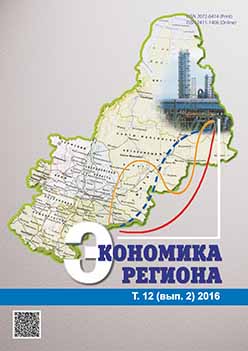Методика оценки экономической эффективности инвестиционных проектов, реализуемых на принципах государственно-частного партнерства
Public-Private Investment Partnerships: Efficiency Estimation Methods
Author(s): Aleksandr Valeryevich TrynovSubject(s): Economy
Published by: Институт экономики Уральского отделения Российской академии наук
Keywords: public-private partnership; PPP; public sector; external economic effects; multiplier effect; “value for money” analysis; cost-effectiveness analysis; balance model of regional economy;
Summary/Abstract: The article focuses on assessing the effectiveness of investment projects implemented on the principles of public-privatepartnership (PPP). This article puts forward the hypothesis that the inclusion of multiplicative economic effects will increasethe attractiveness of public-private partnership projects, which in turn will contribute to the more efficient use of budgetaryresources. The author proposed a methodological approach and methods of evaluating the economic efficiency of PPP projects.The author’s technique is based upon the synthesis of approaches to evaluation of the project implemented in the private andpublic sector and in contrast to the existing methods allows taking into account the indirect (multiplicative) effect arisingduring the implementation of project. In the article, to estimate the multiplier effect, the model of regional economy — socialaccounting matrix (SAM) was developed. The matrix is based on the data of the Sverdlovsk region for 2013. In the article,the genesis of the balance models of economic systems is presented. The evolution of balance models in the Russian (Soviet)and foreign sources from their emergence up to now are observed. It is shown that SAM is widely used in the world for a widerange of applications, primarily to assess the impact on the regional economy of various exogenous factors. In order to clarifythe estimates of multiplicative effects, the disaggregation of the account of the “industry” of the matrix of social accounts wascarried out in accordance with the All-Russian Classifier of Types of Economic Activities (OKVED). This step allows to considerthe particular characteristics of the industry of the estimated investment project. The method was tested on the example ofevaluating the effectiveness of the construction of a toll road in the Sverdlovsk region. It is proved that due to the multiplier effect,the more capital-intensive version of the project may be more beneficial in terms of future tax revenue. The proposed method canbe used by the state and municipal authorities in the evaluation and substantiation of projects on a public-private partnership.
Journal: Экономика региона
- Issue Year: 12/2016
- Issue No: 2
- Page Range: 602-612
- Page Count: 11
- Language: Russian

